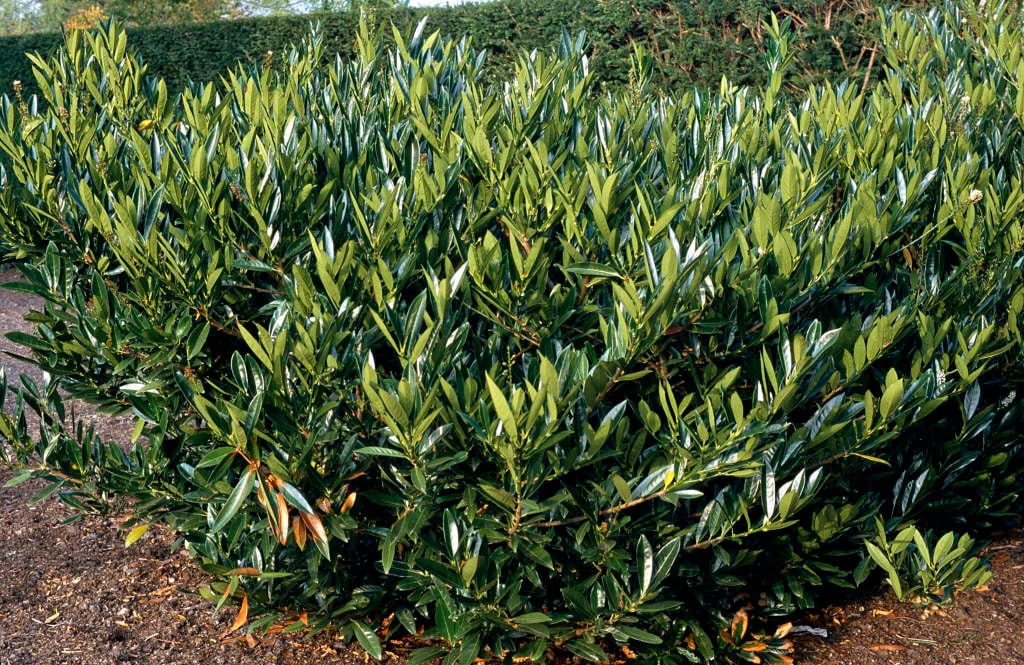Prunus laurocerasus 'Otto Luyken'

cherry laurel 'Otto Luyken'
A spreading evergreen shrub to 1m tall, with dense, low growth, and narrow, glossy dark green leaves. Small, strongly fragrant white flowers in erect racemes appear in spring, followed by cherry-like red fruits turning to glossy black
Size
Ultimate height
0.5–1 metresTime to ultimate height
5–10 yearsUltimate spread
1–1.5 metresGrowing conditions
Moisture
Moist but well–drained, Well–drainedpH
Acid, Alkaline, NeutralColour & scent
| Stem | Flower | Foliage | Fruit | |
| Spring | White | Green | ||
|---|---|---|---|---|
| Summer | Green | |||
| Autumn | Green | Black Red | ||
| Winter | Green |
Position
- Full sun
- Partial shade
Aspect
South–facing or West–facing or North–facing or East–facing
Exposure
Exposed or ShelteredDrought resistance
Yes Hardiness
H5Botanical details
- Family
- Rosaceae
- Native to GB / Ireland
- No
- Foliage
- Evergreen
- Habit
- Bushy
- Potentially harmful
- Seed kernels harmful if eaten, wear gloves and other protective equipment when handling Pets (dogs, rabbits, rodents): Harmful if eaten - for further information and contact numbers regarding pets, see the HTA guide to potentially harmful plants
- Genus
Prunus can be deciduous or evergreen trees or shrubs with showy flowers in spring, and often good autumn foliage colour. Some have edible fruit in autumn, and a few species have ornamental bark
- Name status
Accepted
How to grow
Cultivation
Easy to grow in any moist but well-drained, moderately fertile soil in sun or partial shade. Its spreading habit makes it useful for low hedges and massed planting but may become chlorotic on poorer, shallow chalky soils. Has the potential to become a nuisance if not managed well
Propagation
Propagate by semi-ripe cuttings from late summer to autumn or hardwood cuttings from late autumn to late winter
Suggested planting locations and garden types
- City and courtyard gardens
- Coastal
- Cottage and informal garden
- Wildlife gardens
- Low Maintenance
- Hedging and screens
Pruning
Pruning group 8 including hedges in late spring or early summer
Pests
May be susceptible to vine weevil and leaf-mining moths
Diseases
May be susceptible to powdery mildews and other laurel leaf diseases
Get involved
The Royal Horticultural Society is the UK’s leading gardening charity. We aim to enrich everyone’s life through plants, and make the UK a greener and more beautiful place.
